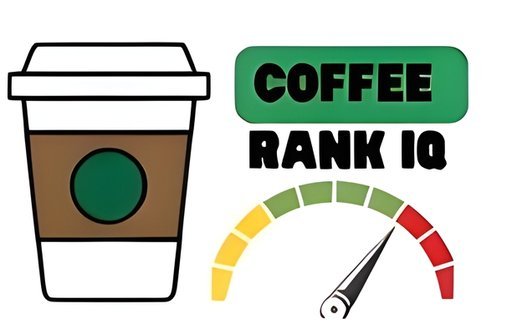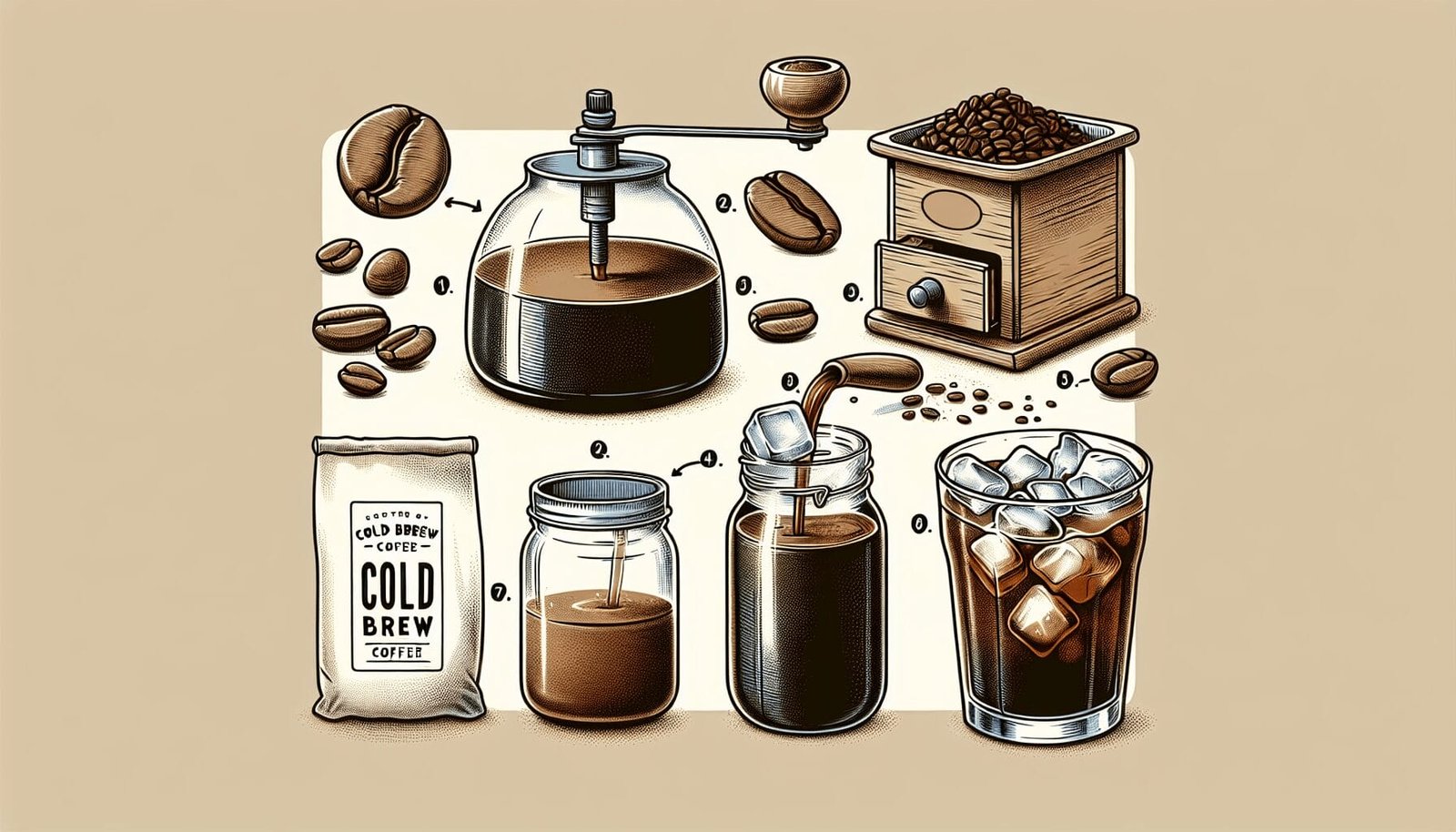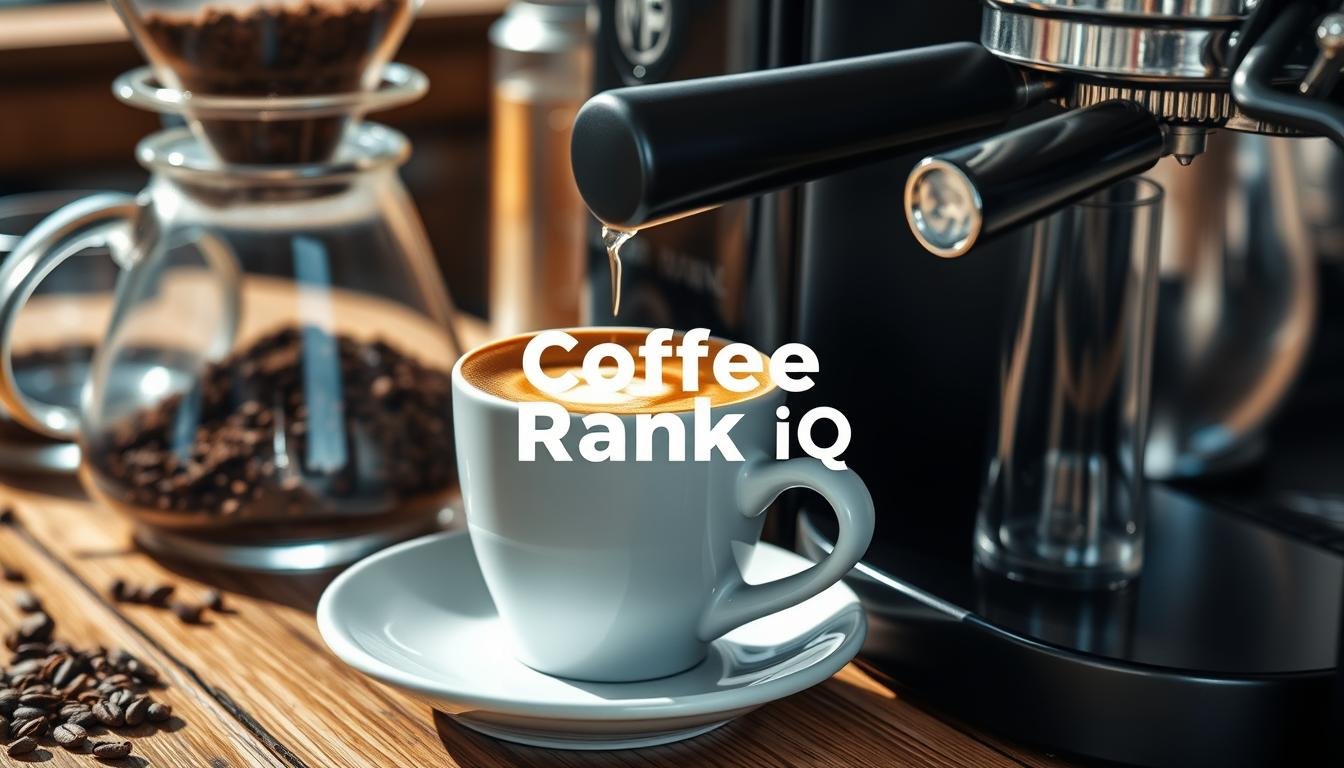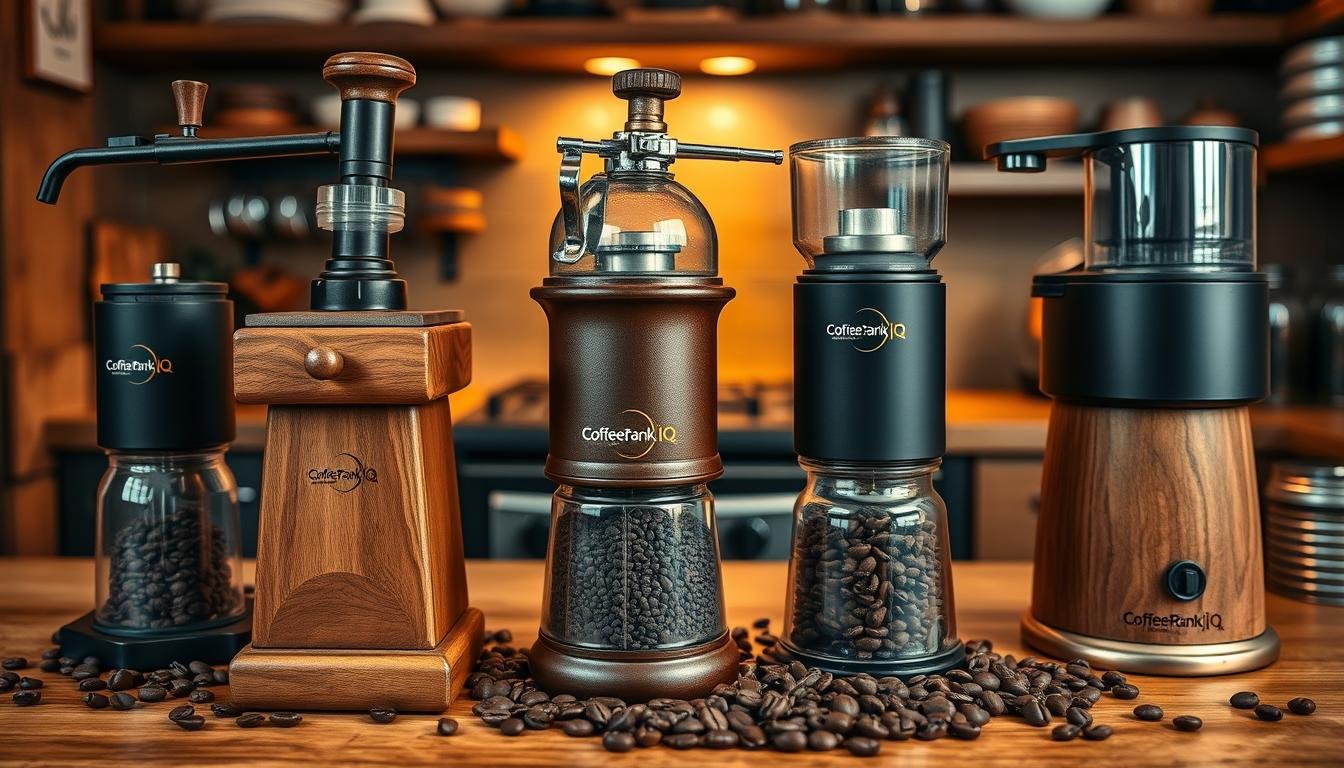So you’ve heard all the buzz about cold brew coffee and you’re curious to try it for yourself? Look no further! This beginner’s guide to cold brew coffee is here to demystify the process and help you make the perfect cup of refreshingly smooth and flavorful coffee. Whether you’re a coffee aficionado or just starting to explore the world of specialty coffee, this guide will walk you through the basics, from selecting the right beans to brewing techniques and serving suggestions. So grab your favorite mug, and let’s embark on this delicious journey together.
What is Cold Brew Coffee?
Definition
Cold brew coffee is a unique brewing method that involves steeping coffee grounds in cold or room temperature water for an extended period of time, usually 12-24 hours. Unlike traditional hot brewed coffee, cold brew coffee is never exposed to high temperatures, resulting in a coffee concentrate that is smooth, rich, and low in acidity.
Benefits
Cold brew coffee offers several benefits that make it a popular choice among coffee enthusiasts. Some of these benefits include:
Benefits of Cold Brew Coffee
Smooth flavor
One of the standout features of cold brew coffee is its exceptionally smooth flavor. The extended brewing time allows for a gentle extraction of flavors from the coffee grounds, resulting in a drink that is less bitter and acidic compared to hot brewed coffee. The slow extraction process also lends itself to a deep and well-rounded taste profile, with subtle notes of chocolate, caramel, and nuttiness.
Lower acidity
For individuals who experience stomach discomfort or acid reflux after consuming regular coffee, cold brew coffee can be a game-changer. The extended steeping time reduces the acidity of the final brew, making it a more gentle option for those with sensitive stomachs.
Reduced bitterness
If bitterness is a taste you prefer to avoid in your coffee, cold brew might be the perfect fit for you. The slower extraction method minimizes the release of bitter compounds found in coffee beans, resulting in a smoother and more mellow cup of joe.
Long shelf life
Unlike hot brewed coffee, cold brew coffee can be stored in the refrigerator for an extended period without losing its flavor or becoming stale. When stored properly in an airtight container, cold brew can last up to two weeks, allowing you to enjoy a refreshing cup whenever you like, without the need to brew a fresh batch every day.
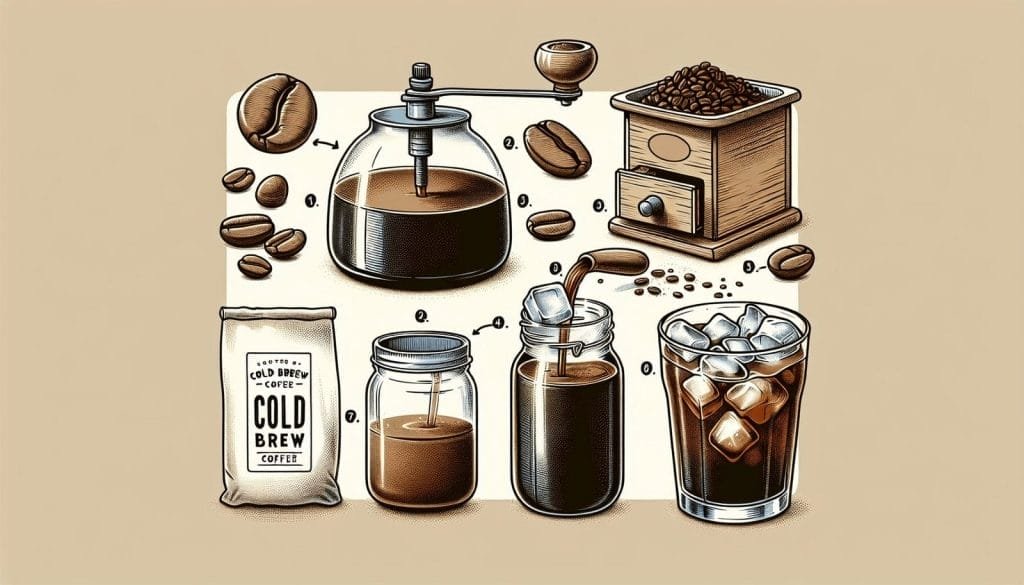
Tools and Ingredients
To make your own delicious cold brew coffee at home, you will need a few key tools and ingredients. Here’s what you’ll need:
Coarsely ground coffee beans
Using coarsely ground coffee beans is essential for making cold brew coffee. The larger grind size allows for a slower extraction process and prevents the final brew from becoming too bitter. When purchasing coffee beans, look for ones specifically labeled for cold brew to ensure the best results.
Water
High-quality water is crucial for brewing any type of coffee, and cold brew is no exception. Use clean, filtered water to avoid any unwanted flavors in your final brew.
Cold brew filter or cheesecloth
To strain the coffee grounds from the liquid concentrate, you will need either a cold brew filter specifically designed for this purpose or a cheesecloth. Both options effectively remove the grounds, leaving behind a smooth and sediment-free coffee concentrate.
Large jar or pitcher
A large glass jar or pitcher is ideal for brewing cold brew coffee. Make sure the container is clean and has enough capacity to hold the water and coffee grounds while still providing some extra room for the concentrate to expand.
Choosing the Right Coffee Beans
The type of coffee beans you choose for your cold brew can greatly impact the flavor and overall experience of your coffee. Consider the following factors when selecting your beans:
Medium to dark roast
For the best results, opt for medium to dark roast coffee beans when making cold brew. These roast levels tend to have more developed flavors and oils, which are better extracted in the longer brewing process of cold brew. Lighter roast beans may result in a milder and less robust flavor profile.
Single-origin or blends
Deciding between single-origin or blended coffee beans depends on your personal preference. Single-origin beans offer a distinct and specific flavor profile unique to their region, while blended beans combine different varieties to create a more balanced taste. Experiment with both to find your preferred flavor profile.
Experimenting with different flavors
Cold brew coffee is incredibly versatile, allowing you to experiment with various flavor combinations. Try infusing your cold brew with spices like cinnamon or vanilla, or even adding a splash of flavored syrup or extracts to create a customized and unique cold brew experience.
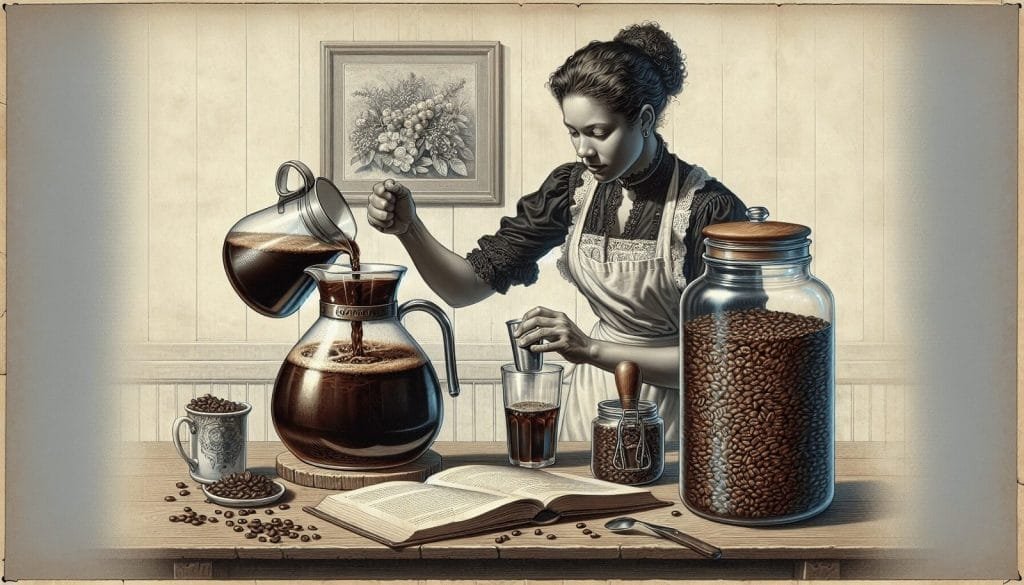
Grinding the Coffee Beans
Properly grinding your coffee beans is crucial for achieving the right extraction and flavor in your cold brew. Consider the following factors when grinding your beans:
Coarseness level
To ensure a smooth and balanced cold brew, aim for a coarseness level similar to that of sea salt. The larger grind size allows for a slower extraction process and prevents the coffee grounds from over-extracting and becoming too bitter.
Burr grinder vs. blade grinder
Investing in a burr grinder is highly recommended for achieving a consistent and even grind size. Unlike blade grinders, burr grinders provide more control and precision, resulting in a better extraction and overall quality of your cold brew. However, if a burr grinder is not available, a blade grinder can still be used with some adjustments and careful attention to watch for an even grind size.
Preparing and Brewing
Now that you have your tools, ingredients, and properly ground coffee, it’s time to start brewing your cold brew coffee. Follow these steps for a delicious and refreshing cold brew experience:
Ratio of coffee to water
A general starting point for the coffee-to-water ratio is 1:4, meaning 1 part coffee to 4 parts water. However, feel free to adjust this ratio according to your taste preferences. If you prefer a stronger brew, increase the amount of coffee, or decrease it for a milder taste.
Cold brewing methods
There are two popular methods for cold brewing: immersion and slow drip. The immersion method involves steeping the coffee grounds in water like a tea bag, while the slow drip method uses a specialized coffee maker that allows water to gradually drip through the grounds. Experiment with both methods to find the one that suits your taste.
Steeping time
The recommended steeping time for cold brew coffee is typically around 12-24 hours. However, steeping times can vary depending on personal preferences and the desired strength of the brew. Remember to adjust the steeping time accordingly to find the perfect balance for your taste buds.
Filtering the concentrate
Once the desired steeping time is complete, it’s time to strain the coffee concentrate. Pour the brewed coffee through a cold brew filter or a cheesecloth to remove the coffee grounds. Be patient during this process as it might take some time for the liquid to pass through the filter. The resulting liquid is your smooth and concentrated cold brew coffee.
Storing and Serving
Proper storage and serving techniques are key to preserving the freshness and quality of your cold brew coffee. Here’s what you need to know:
Storage options
To maintain the best flavor and aroma, transfer the cold brew concentrate into an airtight container and store it in the refrigerator. This will help slow down the oxidation process and keep your cold brew tasting fresh for up to two weeks.
Diluting the concentrate
When it’s time to enjoy your cold brew, it’s important to dilute the concentrate to achieve your preferred taste. A common ratio for dilution is 1 part concentrate to 2-3 parts water or milk. Adjust the dilution ratio to find your perfect balance between strength and flavor.
Serving suggestions
Cold brew coffee can be enjoyed in various ways. Serve it over ice for a refreshing iced coffee experience, or mix it with milk or plant-based alternatives for a creamy and flavorful cold brew latte. Experiment with different serving methods and garnishes, such as a splash of vanilla syrup or a sprinkle of cocoa powder, to create your own signature cold brew creation.
Sweetening and Adding Milk
Enhancing your cold brew with sweeteners and milk can elevate your coffee-drinking experience. Consider the following options:
Choosing sweeteners
Sweetening your cold brew is a matter of personal preference. Opt for natural sweeteners like honey, agave syrup, or maple syrup to enhance the flavors without overpowering the coffee. Experiment with different amounts until you find the perfect level of sweetness.
Types of milk or cream to use
Choosing the right milk or cream can greatly influence the taste and texture of your cold brew coffee. Traditional cow’s milk, almond milk, oat milk, or coconut milk are all popular options. Each type of milk lends its own unique flavor and creaminess, so feel free to explore and see which one you prefer.
Experimenting with flavors
To add an extra layer of flavor to your cold brew, consider experimenting with flavored syrups, extracts, or spices. Vanilla, hazelnut, caramel, and cinnamon are all delicious additions that can transform a simple cold brew into a decadent treat.
Cold Brew Coffee vs. Iced Coffee
While both cold brew coffee and iced coffee are refreshing cold beverage options, they are brewed differently and offer distinct flavor profiles.
Difference in brewing process
Cold brew coffee involves steeping coffee grounds in cold or room temperature water for an extended period, whereas iced coffee is made by brewing coffee with hot water and then cooling it down.
Difference in flavor profile
Cold brew coffee has a smooth, rich flavor with less acidity and bitterness. On the other hand, iced coffee tends to have a more pronounced acidity and can occasionally taste diluted if not brewed and chilled properly. Choose between the two based on your desired flavor experience.
Common Mistakes to Avoid
To ensure the best possible cold brew coffee experience, be aware of these common mistakes and avoid them:
Using the wrong grind size
Grind size plays a crucial role in cold brew extraction. Using a grind size that is too fine can result in an over-extracted and bitter brew, while a grind size that is too coarse may result in a weak and under-extracted brew. Aim for a coarseness similar to sea salt for the ideal extraction.
Not using enough coffee
The coffee-to-water ratio is essential for achieving the right strength and flavor in your cold brew. Using too little coffee can result in a weak and underwhelming brew, while using too much may lead to an overpowering and bitter taste. Experiment with different ratios and adjust according to your taste preferences.
Steeping for too long
While steeping time is important, excessive steeping can lead to an over-extracted and overly bitter brew. It’s essential to find the right balance and adjust the steeping time to suit your taste preferences. Start with the recommended range of 12-24 hours and make adjustments from there.
By following these tips and techniques, you’ll be well on your way to brewing the perfect cold brew coffee. Experiment, have fun, and enjoy the smooth, refreshing flavors that this unique brewing method offers. Cheers to your cold brew coffee adventure!
